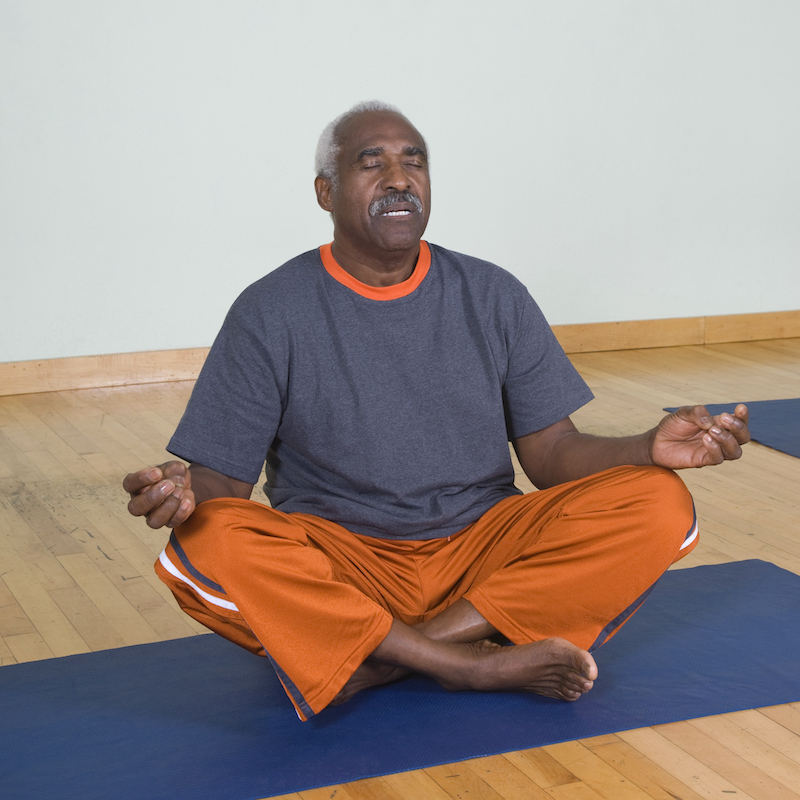Meditators and Nonmeditators Differ on Demographic Factors, Health Behaviors, Health Status, and Health Care Access, New Analysis Shows

A new analysis shows that meditators differed from nonmeditators on key factors, such as demographics, health behaviors, health status, and health care access. These results expand on the relatively limited information known about the characteristics of people who practice meditation. The findings, published in the journal BMC Complementary and Alternative Medicine, are based on data from the 2012 National Health Interview Survey (NHIS), a large survey conducted annually by the Centers for Disease Control and Prevention’s National Center for Health Statistics.
In growing recognition of the diversity of traditions and practices, the 2012 NHIS collected information on three common meditation styles—mantra, mindfulness, and spiritual meditation—to provide greater insight on these practices. The analysis examined the prevalence and patterns of use among 34,525 adults during the 12 months prior to the survey.
Comparing meditators and nonmeditators, the results showed that:
- Meditators were more likely than nonmeditators to be middle-aged, white, female, college-educated, and living in the Western United States.
- Meditators were more likely to engage in preventive health practices such as physical activity, quitting smoking, and having their cholesterol checked.
- Meditators were more likely to be underweight/healthy body weight (41% versus 31%).
- Meditators had more health concerns, including one or more functional limitations (45% versus 34%), chronic back pain (39% versus 27%), and depression (22% versus 9%).
- Meditators were more likely to have visited a conventional health care provider 10 or more times in the previous 12 months (26% versus 13%).
Looking at exclusive use of one of the three types of meditation revealed the following:
- Individuals in all three meditation groups shared characteristics found among users of other complementary health practices, especially self-care or wellness-oriented activities such as yoga.
- Meditation prevalence was typically higher for survey respondents who were female, non-Hispanic white, college-educated, and physically active; who used acupuncture, yoga, and vegetarian diets; and who reported depression as well as higher use of conventional health care services.
- The use of spiritual meditation was more prevalent among those reporting health complaints, using more conventional health services, and being a former drinker and/or a former smoker. Spiritual meditation was also the largest meditation group.
Looking at mindfulness meditation specifically:
- More respondents practiced mindfulness meditation for wellness than to treat a specific health condition (73% versus 30%).
- Stress management, emotional well-being, having an increased sense of control over health issues, and better sleep were the top wellness-related reasons reported for practicing mindfulness meditation.
- Meditators were more likely than nonmeditators to use other complementary health approaches, including provider-based practices such as chiropractic and self-care approaches such as yoga.
The researchers concluded that use of meditation may be more about the type of person practicing than about the specific type of meditation practiced—people using diverse methods to support health and well-being. Considering the nature of consumer preference for seemingly distinct types of meditation practices, understanding the underlying mechanisms, benefits, and applications of practice variations is important.
A previous analysis showed that the total number of U.S. adults who practiced mantra, mindfulness, or spiritual meditation or used meditation as part of other practices (yoga, tai chi, and qi gong) was almost 18 million.
Reference
- Burke A, Lam CN, Stussman B, et al. Prevalence and patterns of use of mantra, mindfulness and spiritual meditation among adults in the United States. BMC Complementary and Alternative Medicine. 2017;17(1):316.
Additional Resources
Publication Date: June 15, 2017